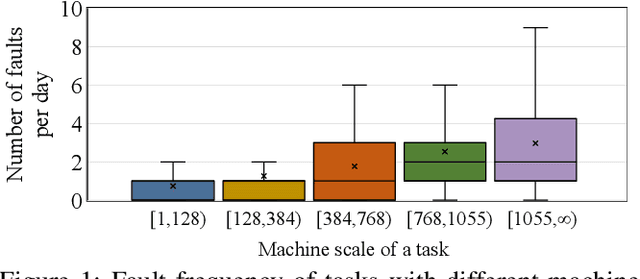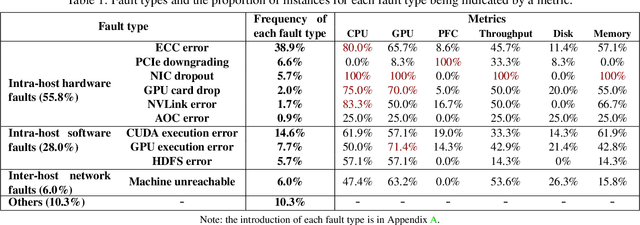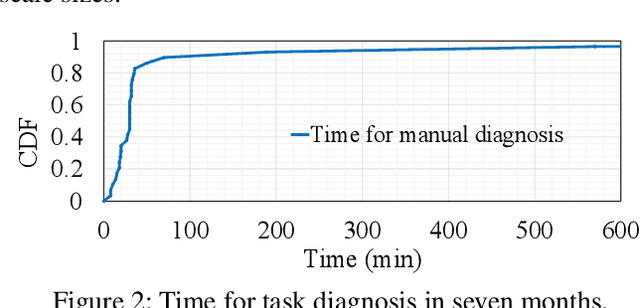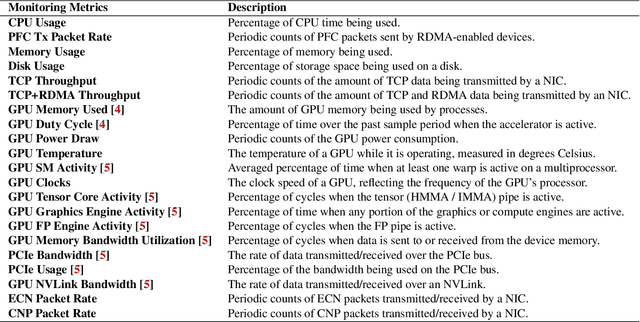Zhang Zhang
MME-Unify: A Comprehensive Benchmark for Unified Multimodal Understanding and Generation Models
Apr 07, 2025Abstract:Existing MLLM benchmarks face significant challenges in evaluating Unified MLLMs (U-MLLMs) due to: 1) lack of standardized benchmarks for traditional tasks, leading to inconsistent comparisons; 2) absence of benchmarks for mixed-modality generation, which fails to assess multimodal reasoning capabilities. We present a comprehensive evaluation framework designed to systematically assess U-MLLMs. Our benchmark includes: Standardized Traditional Task Evaluation. We sample from 12 datasets, covering 10 tasks with 30 subtasks, ensuring consistent and fair comparisons across studies." 2. Unified Task Assessment. We introduce five novel tasks testing multimodal reasoning, including image editing, commonsense QA with image generation, and geometric reasoning. 3. Comprehensive Model Benchmarking. We evaluate 12 leading U-MLLMs, such as Janus-Pro, EMU3, VILA-U, and Gemini2-flash, alongside specialized understanding (e.g., Claude-3.5-Sonnet) and generation models (e.g., DALL-E-3). Our findings reveal substantial performance gaps in existing U-MLLMs, highlighting the need for more robust models capable of handling mixed-modality tasks effectively. The code and evaluation data can be found in https://mme-unify.github.io/.
Q-MambaIR: Accurate Quantized Mamba for Efficient Image Restoration
Mar 27, 2025Abstract:State-Space Models (SSMs) have attracted considerable attention in Image Restoration (IR) due to their ability to scale linearly sequence length while effectively capturing long-distance dependencies. However, deploying SSMs to edge devices is challenging due to the constraints in memory, computing capacity, and power consumption, underscoring the need for efficient compression strategies. While low-bit quantization is an efficient model compression strategy for reducing size and accelerating IR tasks, SSM suffers substantial performance drops at ultra-low bit-widths (2-4 bits), primarily due to outliers that exacerbate quantization error. To address this challenge, we propose Q-MambaIR, an accurate, efficient, and flexible Quantized Mamba for IR tasks. Specifically, we introduce a Statistical Dynamic-balancing Learnable Scalar (DLS) to dynamically adjust the quantization mapping range, thereby mitigating the peak truncation loss caused by extreme values. Furthermore, we design a Range-floating Flexible Allocator (RFA) with an adaptive threshold to flexibly round values. This approach preserves high-frequency details and maintains the SSM's feature extraction capability. Notably, RFA also enables pre-deployment weight quantization, striking a balance between computational efficiency and model accuracy. Extensive experiments on IR tasks demonstrate that Q-MambaIR consistently outperforms existing quantized SSMs, achieving much higher state-of-the-art (SOTA) accuracy results with only a negligible increase in training computation and storage saving.
Aligning Multimodal LLM with Human Preference: A Survey
Mar 18, 2025Abstract:Large language models (LLMs) can handle a wide variety of general tasks with simple prompts, without the need for task-specific training. Multimodal Large Language Models (MLLMs), built upon LLMs, have demonstrated impressive potential in tackling complex tasks involving visual, auditory, and textual data. However, critical issues related to truthfulness, safety, o1-like reasoning, and alignment with human preference remain insufficiently addressed. This gap has spurred the emergence of various alignment algorithms, each targeting different application scenarios and optimization goals. Recent studies have shown that alignment algorithms are a powerful approach to resolving the aforementioned challenges. In this paper, we aim to provide a comprehensive and systematic review of alignment algorithms for MLLMs. Specifically, we explore four key aspects: (1) the application scenarios covered by alignment algorithms, including general image understanding, multi-image, video, and audio, and extended multimodal applications; (2) the core factors in constructing alignment datasets, including data sources, model responses, and preference annotations; (3) the benchmarks used to evaluate alignment algorithms; and (4) a discussion of potential future directions for the development of alignment algorithms. This work seeks to help researchers organize current advancements in the field and inspire better alignment methods. The project page of this paper is available at https://github.com/BradyFU/Awesome-Multimodal-Large-Language-Models/tree/Alignment.
HeightFormer: Learning Height Prediction in Voxel Features for Roadside Vision Centric 3D Object Detection via Transformer
Mar 13, 2025Abstract:Roadside vision centric 3D object detection has received increasing attention in recent years. It expands the perception range of autonomous vehicles, enhances the road safety. Previous methods focused on predicting per-pixel height rather than depth, making significant gains in roadside visual perception. While it is limited by the perspective property of near-large and far-small on image features, making it difficult for network to understand real dimension of objects in the 3D world. BEV features and voxel features present the real distribution of objects in 3D world compared to the image features. However, BEV features tend to lose details due to the lack of explicit height information, and voxel features are computationally expensive. Inspired by this insight, an efficient framework learning height prediction in voxel features via transformer is proposed, dubbed HeightFormer. It groups the voxel features into local height sequences, and utilize attention mechanism to obtain height distribution prediction. Subsequently, the local height sequences are reassembled to generate accurate 3D features. The proposed method is applied to two large-scale roadside benchmarks, DAIR-V2X-I and Rope3D. Extensive experiments are performed and the HeightFormer outperforms the state-of-the-art methods in roadside vision centric 3D object detection task.
HumanoidPano: Hybrid Spherical Panoramic-LiDAR Cross-Modal Perception for Humanoid Robots
Mar 13, 2025Abstract:The perceptual system design for humanoid robots poses unique challenges due to inherent structural constraints that cause severe self-occlusion and limited field-of-view (FOV). We present HumanoidPano, a novel hybrid cross-modal perception framework that synergistically integrates panoramic vision and LiDAR sensing to overcome these limitations. Unlike conventional robot perception systems that rely on monocular cameras or standard multi-sensor configurations, our method establishes geometrically-aware modality alignment through a spherical vision transformer, enabling seamless fusion of 360 visual context with LiDAR's precise depth measurements. First, Spherical Geometry-aware Constraints (SGC) leverage panoramic camera ray properties to guide distortion-regularized sampling offsets for geometric alignment. Second, Spatial Deformable Attention (SDA) aggregates hierarchical 3D features via spherical offsets, enabling efficient 360{\deg}-to-BEV fusion with geometrically complete object representations. Third, Panoramic Augmentation (AUG) combines cross-view transformations and semantic alignment to enhance BEV-panoramic feature consistency during data augmentation. Extensive evaluations demonstrate state-of-the-art performance on the 360BEV-Matterport benchmark. Real-world deployment on humanoid platforms validates the system's capability to generate accurate BEV segmentation maps through panoramic-LiDAR co-perception, directly enabling downstream navigation tasks in complex environments. Our work establishes a new paradigm for embodied perception in humanoid robotics.
Conformal Uncertainty Indicator for Continual Test-Time Adaptation
Feb 05, 2025Abstract:Continual Test-Time Adaptation (CTTA) aims to adapt models to sequentially changing domains during testing, relying on pseudo-labels for self-adaptation. However, incorrect pseudo-labels can accumulate, leading to performance degradation. To address this, we propose a Conformal Uncertainty Indicator (CUI) for CTTA, leveraging Conformal Prediction (CP) to generate prediction sets that include the true label with a specified coverage probability. Since domain shifts can lower the coverage than expected, making CP unreliable, we dynamically compensate for the coverage by measuring both domain and data differences. Reliable pseudo-labels from CP are then selectively utilized to enhance adaptation. Experiments confirm that CUI effectively estimates uncertainty and improves adaptation performance across various existing CTTA methods.
TimeRAF: Retrieval-Augmented Foundation model for Zero-shot Time Series Forecasting
Dec 30, 2024Abstract:Time series forecasting plays a crucial role in data mining, driving rapid advancements across numerous industries. With the emergence of large models, time series foundation models (TSFMs) have exhibited remarkable generalization capabilities, such as zero-shot learning, through large-scale pre-training. Meanwhile, Retrieval-Augmented Generation (RAG) methods have been widely employed to enhance the performance of foundation models on unseen data, allowing models to access to external knowledge. In this paper, we introduce TimeRAF, a Retrieval-Augmented Forecasting model that enhance zero-shot time series forecasting through retrieval-augmented techniques. We develop customized time series knowledge bases that are tailored to the specific forecasting tasks. TimeRAF employs an end-to-end learnable retriever to extract valuable information from the knowledge base. Additionally, we propose Channel Prompting for knowledge integration, which effectively extracts relevant information from the retrieved knowledge along the channel dimension. Extensive experiments demonstrate the effectiveness of our model, showing significant improvement across various domains and datasets.
Instruct or Interact? Exploring and Eliciting LLMs' Capability in Code Snippet Adaptation Through Prompt Engineering
Nov 23, 2024Abstract:Code snippet adaptation is a fundamental activity in the software development process. Unlike code generation, code snippet adaptation is not a "free creation", which requires developers to tailor a given code snippet in order to fit specific requirements and the code context. Recently, large language models (LLMs) have confirmed their effectiveness in the code generation task with promising results. However, their performance on adaptation, a reuse-oriented and context-dependent code change prediction task, is still unclear. To bridge this gap, we conduct an empirical study to investigate the performance and issues of LLMs on the adaptation task. We first evaluate the adaptation performances of three popular LLMs and compare them to the code generation task. Our result indicates that their adaptation ability is weaker than generation, with a nearly 15% decrease on pass@1 and more context-related errors. By manually inspecting 200 cases, we further investigate the causes of LLMs' sub-optimal performance, which can be classified into three categories, i.e., Unclear Requirement, Requirement Misalignment and Context Misapplication. Based on the above empirical research, we propose an interactive prompting approach to eliciting LLMs' adaptation ability. Experimental result reveals that our approach greatly improve LLMs' adaptation performance. The best-performing Human-LLM interaction successfully solves 159 out of the 202 identified defects and improves the pass@1 and pass@5 by over 40% compared to the initial instruction-based prompt. Considering human efforts, we suggest multi-agent interaction as a trade-off, which can achieve comparable performance with excellent generalization ability. We deem that our approach could provide methodological assistance for autonomous code snippet reuse and adaptation with LLMs.
Minder: Faulty Machine Detection for Large-scale Distributed Model Training
Nov 04, 2024



Abstract:Large-scale distributed model training requires simultaneous training on up to thousands of machines. Faulty machine detection is critical when an unexpected fault occurs in a machine. From our experience, a training task can encounter two faults per day on average, possibly leading to a halt for hours. To address the drawbacks of the time-consuming and labor-intensive manual scrutiny, we propose Minder, an automatic faulty machine detector for distributed training tasks. The key idea of Minder is to automatically and efficiently detect faulty distinctive monitoring metric patterns, which could last for a period before the entire training task comes to a halt. Minder has been deployed in our production environment for over one year, monitoring daily distributed training tasks where each involves up to thousands of machines. In our real-world fault detection scenarios, Minder can accurately and efficiently react to faults within 3.6 seconds on average, with a precision of 0.904 and F1-score of 0.893.
Eliminating the Language Bias for Visual Question Answering with fine-grained Causal Intervention
Oct 14, 2024Abstract:Despite the remarkable advancements in Visual Question Answering (VQA), the challenge of mitigating the language bias introduced by textual information remains unresolved. Previous approaches capture language bias from a coarse-grained perspective. However, the finer-grained information within a sentence, such as context and keywords, can result in different biases. Due to the ignorance of fine-grained information, most existing methods fail to sufficiently capture language bias. In this paper, we propose a novel causal intervention training scheme named CIBi to eliminate language bias from a finer-grained perspective. Specifically, we divide the language bias into context bias and keyword bias. We employ causal intervention and contrastive learning to eliminate context bias and improve the multi-modal representation. Additionally, we design a new question-only branch based on counterfactual generation to distill and eliminate keyword bias. Experimental results illustrate that CIBi is applicable to various VQA models, yielding competitive performance.
 Add to Chrome
Add to Chrome Add to Firefox
Add to Firefox Add to Edge
Add to Edge